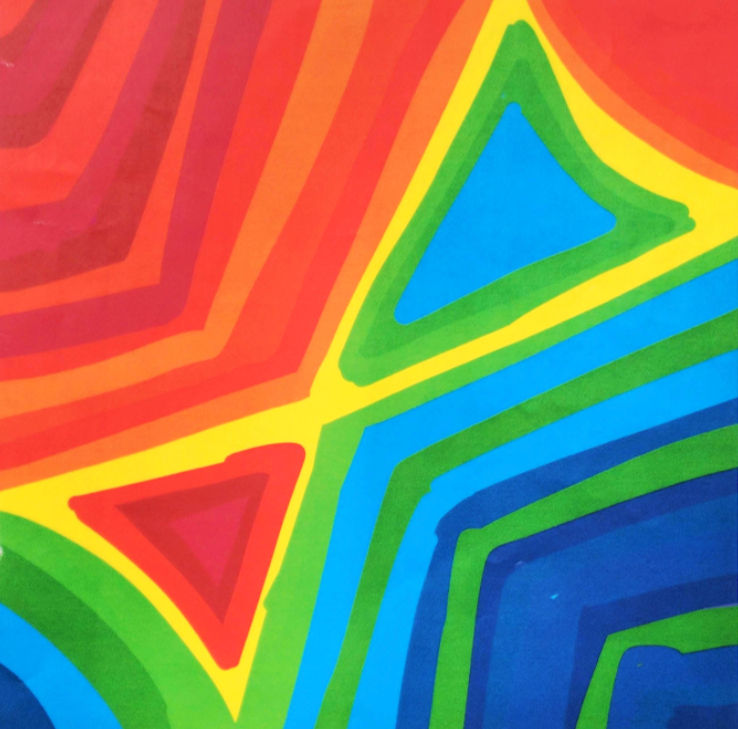











Bridging Intuition and Analysis: Tactile Technology in ARTS 107, USC SVAD's Color and Composition Course
One of the most important aspects of ARTS 107’s conceptual understanding of color forms is the use of handheld technology and the creation of 'blobbies.' The intended use of technology in ARTS 107 is to enhance learning quality, foster technological agility, and improve efficiency in artistic production and learning outcomes.
Project example by AidanWokurka: top, completed Complementary Contrast final painting; and, bottom, Complementary Contrast preliminary painting.


Memory, Intuition and Physical Touch
The Adobe Ideas app serves as our primary tool in ARTS 107 because it provides the most authentic digital experience for working with color forms by hand. The touch-based interface of the app enables students to connect digital learning with physical interaction through direct contact instead of using a stylus. Through this activity students can use their sensorimotor systems to color form relationships in a way that mirrors traditional material handling which strengthens their artistic intuition and their knowledge of the physical aspects of color mixing.

Memory Formation and Second Nature
The Adobe Ideas app’s design includes a deliberate process of alternating between analytical left-brain activities and intuitive right-brain activities. The transition between following color theory rules and developing color forms through alternating neuro instinct creates a sense of complexity in what appears to be a basic application. The alternating process between planning and execution through technology develops neural integration which enables students over time to develop agility in their use of digital tools, thus becoming natural extensions of their hands just like paintbrushes.

The color ‘blobbies” and digital iPad sketches are some of the most important activities of the course. They are a digital sketchbook paramount to their development of recognizing and understanding color forms. The motor cortex and cerebellum and basal ganglia brain regions become active when students perform embodied digital tasks that require motor skills and procedural memory development. The hippocampus functions to transform new motor-visual learning experiences into permanent storage in memory. Students develop technical skills while building an intuitive ability to use technology through this embodied digital learning approach which creates sustained creative potential.

The artists of ARTS 107 use technology to advance their creative work instead of replacing their traditional artistic tools which enhances users' procedural memory and their ability to perceive and work with intuition. Students develop brain hemisphere. The process of using Adobe Ideas to drag and shape digital colors on a screen creates an embodied experience coordination through their ongoing exchange between analytical color theory and spontaneous exploration which activates cerebellum and basal ganglia and motor cortex and hippocampus regions for motion-based learning and memory development. The combination of technology with creative thinking enables artists to develop their perception skills while gaining deeper knowledge and achieving digital artistic independence.

The blobbies and preliminary digital sketches are used throughout the course before creating a final painting. This example demonstrates Complementary Contrast. On the far left are six sets of complementary colors in light–dark contrast, in the middle is a preliminary digital sketch, and on the far right is the final acrylic painting.




